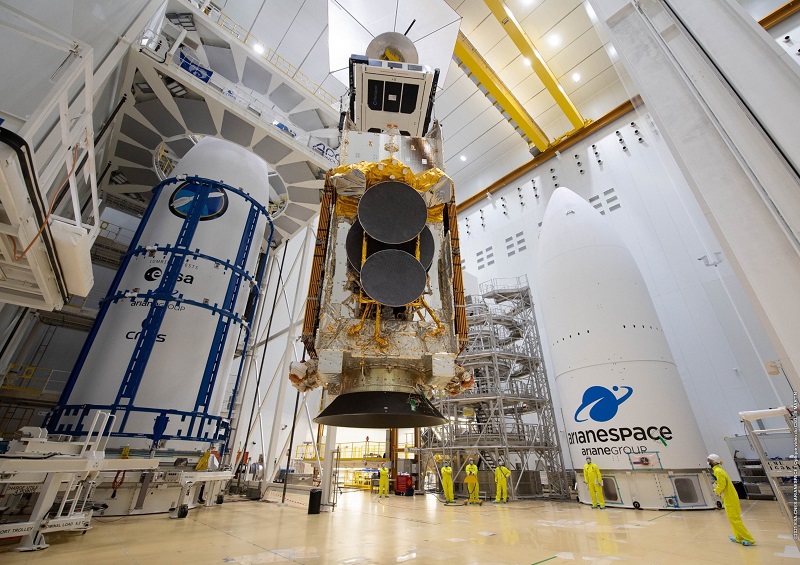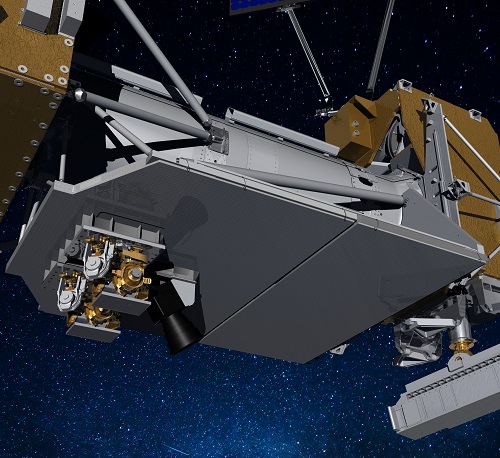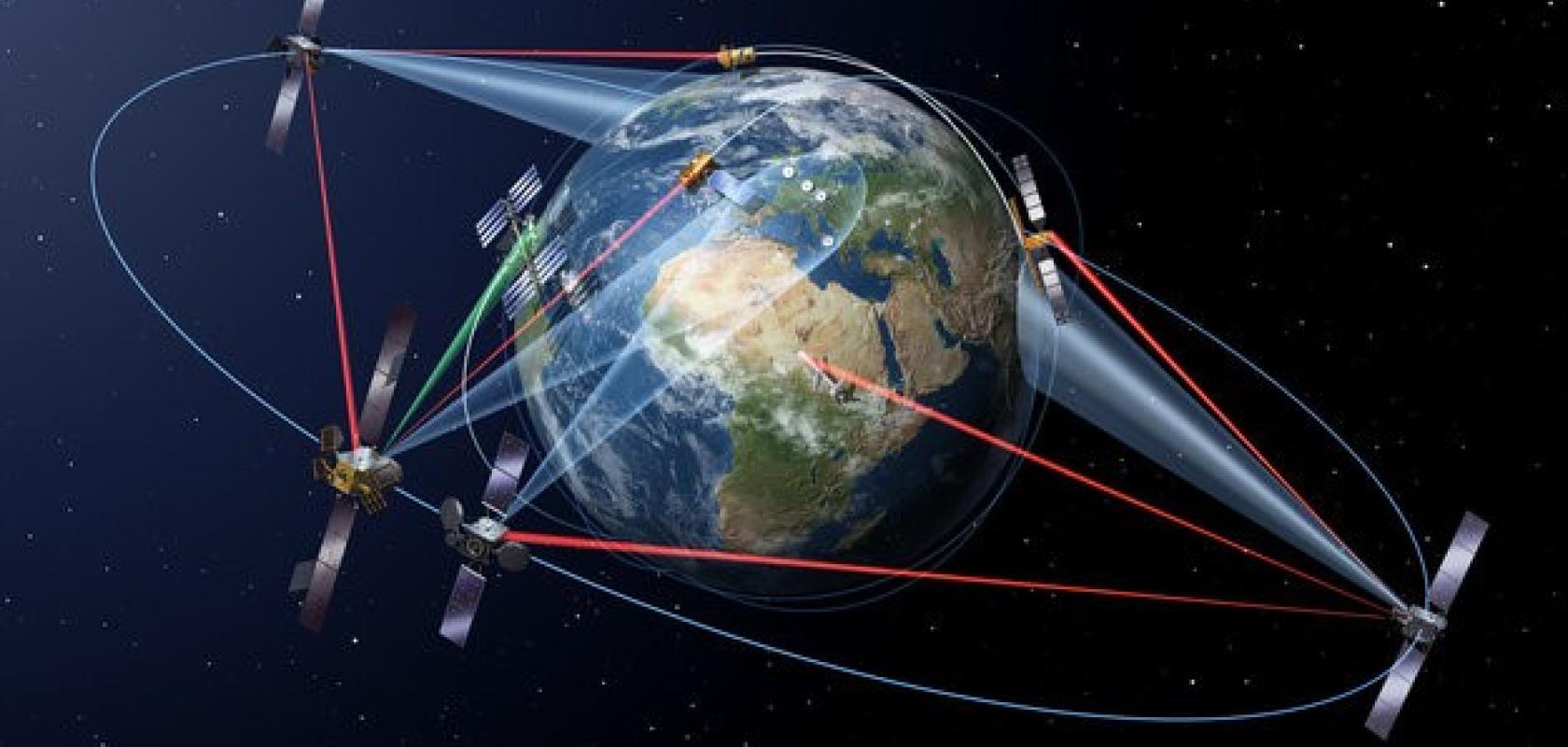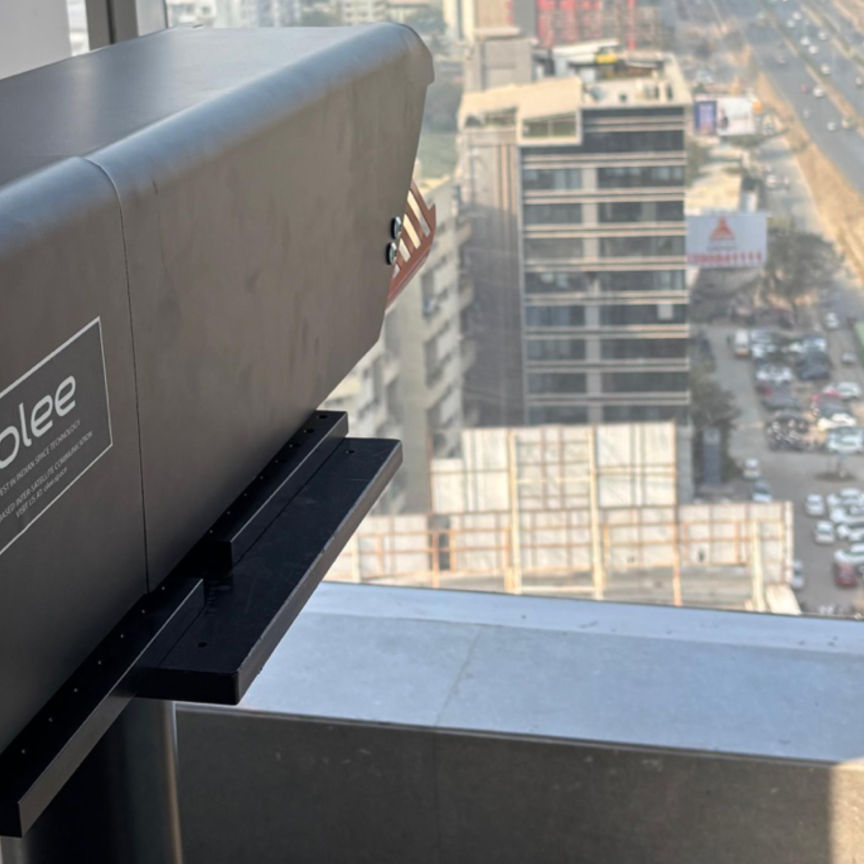Matthew Dale speaks with ESA to learn about the opportunities arising for photonics in the space sector
Radio waves have successfully been used for space communications since humanity began exploring the cosmos. However, as space missions generate and collect increasing amounts of data, the need for enhanced communications capabilities becomes increasingly important. It is here where there is a huge opportunity for photonics to be disruptive – enabling digital optical communications.
Optical communications can provide significant benefits for missions, including bandwidth increases of 10 to 100 times more than radio frequency systems.
Additionally, optical communications could reduce size, weight, and power requirements. This means more room for scientific instruments, less expensive launches, and less drainage on spacecraft batteries.
Evidence of this communications overhaul can already be seen amongst the stars. In December for example, NASA launched its Laser Communications Relay Demonstration (LCRD) aboard the US Department of Defense’s Space Test Program Satellite 6 (STPSat-6). The technology aims to showcase the unique capabilities of optical communications, receiving data from future space missions and then relaying it down to ground stations on Earth.
Also throughout last year, SpaceX launched numerous satellites to bolster its Starlink constellation with laser communication systems, enabling the network to operate with fewer ground stations. The firm went on to announce that it intends all its future Starlink satellites to wield this technology. The need for this technology was clearly evident in the recent disaster in Tonga, where a volcanic eruption tore through an undersea fibre optic link, causing a communication blackout to the island. Such problems could be a thing of the past if constellations with sufficient data capacity are built in the future.
Despite the headway being made across the pond, free-space optical communication is actually a technology pioneered in Europe. It was first demonstrated by SILEX, a free-space optical communication system between ESA’s Artemis (Advanced Relay and TEchnology MIssion Satellite) spacecraft and the French Earth-observation spacecraft SPOT-4. SILEX offered data transmission at 50Mbps from low Earth orbit (LEO) to geostationary orbit (GEO) using GaAlAs laser-diodes and direct detection. Since this early demonstration the technology has evolved, with the latest European Data Relay Service (EDRS) now being operational, offering data rates up to 1.8Gbps between LEO and GEO satellites using BPSK homodyne detection. This gives LEO satellites the opportunity to continuously download data to the ground, which would otherwise not be possible.

Satellite constellations such as StarLink will enable even the most remote parts of the world to be connected to the internet. (Image: Shutterstock/NicoElNino)
Iain Mckenzie, senior optoelectronics engineer at ESA, sees this transition to optical communications as a huge opportunity for photonics. This is both due to the number of future satellites planned for launch that will use the technology, as well as the large amount of photonics technology required in these laser communications terminals. ‘Laser communications terminals require both standard optics such as telescopes, beam steering optics, passive optical filters, fibre optic harness components, and wavelength division multiplexing, as well as photonics and optoelectronics such as optical amplifiers, lasers, detectors and modulators. There is the need for a complete supply chain from equipment down to component level required to service this market.’
The evolution of these optical terminals has been dramatic, according to Mckenzie, with their size, weight and power reducing dramatically together with an exponential increase in data carrying capacity. He added that future links are expected to make use of coherent transceiver modules operating at over 100Gbps, and combining these using wavelength division multiplexing will increase the data rate even further.
Continuous development
Despite the already successful launch of optical communications technology across multiple high-profile missions, the technology isn’t yet fully mature, leaving plenty of opportunity for photonics firms to jump onboard this space-bound bandwagon.
In addition to the increasing use of photonics in free-space optical links, photonics components are also finding their applications within satellites. Mckenzie confirmed this using the technology aboard the new SES-17 satellite as an example, which in October was launched to provide high-speed data links for commercial aviation. Built by Thales Alenia Space, the satellite introduces cutting-edge innovations developed within ESA’s Advanced Research in Telecommunication Systems programme. It can provide data links of up to 2Gb/s between any of the approximately 200 fixed beams that cover the Earth’s surface, including the transatlantic air corridors.

The SES-17 satellite will provide high-speed data links for commercial aviation using optical communications. (Image: ESA/Thales Alenia Space)
‘The very-high throughput telecom processor onboard this satellite uses an optical backplane for the first time,’ said Mckenzie. ‘The communication between the ASIC chips is handled using optical transceivers operating at 11.5Gb/s. This is a disruption in terms of what was previously done, where everything was handled using a standard copper backplane. There's always room for improvement however. Despite the 11.5Gb/s achieved onboard SES-17, the push for the next generation of payloads already aims to go to 28Gb/s and beyond. In addition, to challenge the kind of power performance that you can get in terms of power-per-bit, there's always a need to push that down. New technologies and innovations are always being sought after in order to try and improve the performance of these links. Today, photonics has shown that it can outperform the standard copper links, but the desire is to push that as far as we can in order to make interesting payloads that perhaps can't even be conceived of today. For satellite constellations in particular, one of the key challenges is identifying improved efficiencies for optical amplification, because amplification becomes the limiting factor in terms of power consumption in these links.’
Other opportunities for photonics exist in getting the data up into space before it can be communicated between satellites, which requires dealing with all the challenges of laser transmission through the atmosphere. ‘These are challenges that can be solved by photonics, such as adaptive optics and the use of laser guide stars,’ Mckenzie continued. ‘A lot of this has been well developed in the areas of astronomy, but we still need to address these issues in terms of optical communication.’

NASA’s Laser Communications Relay Demonstration (LCRD) aims to showcase the unique capabilities of optical communications for future space missions. (Image: NASA’s Goddard Space Flight Center)
Adding to the growing list of reasons for photonics firms to consider participating in the space sector is the dramatic ramping up of volume that has taken place in recent years.
‘This was previously a challenge for the space sector, as it's only recently that we’ve seen space applications requiring larger volume,’ said Mckenzie. ‘Using satellite constellations as an example, these consist of thousands of satellites, each with the capacity to have several optical terminals on board, or in the case of the digital transparent processor, hundreds of transceivers.’
He noted however that despite this increasing volume, the numbers of the space sector are still dwarfed by terrestrial applications – each data centre on earth for example requires hundreds of thousands to millions of transceivers. Therefore firms should keep this in mind if they are considering developing technology for the space sector.
Opportunities for all
With the gauntlet having been thrown by the space sector, which photonics firms are best poised to accept the technological challenge? Should start-ups and SMEs need not apply, or do they stand the same chance as larger, more established firms of winning supplier contracts to space agencies or private firms such as SpaceX, Blue Origin and Virgin Galactic?
Thankfully, due to the increasing number of private firms developing technology to provide space-based services, the sector is undergoing a period of commercialisation, which according to Mckenzie is providing opportunities for firms of all sizes: ‘In a lot of these new applications, reducing cost, which wasn't always the first thing considered when developing space hardware in the past, is becoming something that is critical to the development of space hardware going forward, particularly when commercial interests are at stake. And so the space community is becoming much more accepting of risk in terms of technology development, leading it to be a lot more open to looking at new companies.’
Evidence of this can be seen in the wake of a recent call by the European Commission. The call was for firms to put forward a detailed technical concept architecture for a future European satellite constellation, with the goal of establishing Europe’s future sovereign communications infrastructure in space. In December, two consortiums (French and German) consisting of SMEs and startups were each awarded €1.4 million to launch an initial study into this project. One of the consortiums, New Symphonie, is led by Unseenlabs and Euroconsult, while the second consortium, UN:IO, is led by Mynaric, Isar Aerospace, and Reflex Aerospace. The first demo mission could launch as early as 2023.
‘This is the European answer to the ongoing, American-led constellation work,’ said Nikos Karafolas, senior engineer and technical officer at ESA. ‘The call was primarily addressed towards smaller, newer companies.’
It’s not just through government calls that smaller firms can hope to gain entry into the space sector however. Karafolas continued by explaining that while in the past the sector was dominated by a few select ‘primes’ – those responsible for the design and assembly of complete spacecraft systems – whose supplier lists made up the majority of firms supplying technology for the space sector, this is no longer the case. ‘With new space it’s a different situation because we have many more primes leading the manufacture of satellites and payloads,’ he said. ‘So while photonics companies would still have to become part of these primes’ supplier lists to enter the space market, there are many more of them around now than there were in the past.’
Striving for sovereignty
So with it clear that the size of a photonics firm doesn’t matter with regards to its technology being adopted by the space sector, how might its location impact the situation?
‘From the European perspective, the idea of sovereignty is a very important one, and so when looking for technologies, we ideally look to establish links with European companies where possible,’ said Mckenzie. ‘This isn’t always the case however when searching for an optimal solution. For example, if we look at today's satellites, a large portion of their components are still sourced from outside Europe.
‘But this is something that Europe continually looks to address through programmes like the European Components Initiative, which aims to reduce the dependence of Europe's space sector on non-European component suppliers – improving Europe’s sovereignty over space technologies.
Seeking innovations in micro
Since the year 2000 ESA has been running a comprehensive programme investigating all the potential applications photonics can have in space.
‘We’ve looked at everything over the years…nobody else has done the work as diligently as ESA,’ remarked Karafolas. ‘It's not by chance that we have come to be the first ones to fly commercial satellites fully equipped with optical digital interconnects.’
The agency is continually looking at maturing technologies that can be used to further bring down the cost of space applications.
‘So what we are looking for at the moment is, for example, microwave photonics,’ Karafolas continued. ‘The first application is the fibre optic microwave links that connect the antennas to the digital processor. At present, this is still done using coaxial cables, but we are working towards making it a technically and economically feasible solution using fibre optics.
‘There’s also a number of different functions, for example beamforming networks, that we're looking to achieve using photonic integrated chips. And that's where over the past five years we have given many contracts to implement functions, especially for the satellite payload, that can be served by photonic integrated chips. This is an open battleground between photonics and electronics, and is an area where we are heavily investing.’
And so the time is ripe for photonics firms to move into the ever-growing, increasingly commercial space sector. The applications are plentiful, volume is growing, and both companies and government agencies are actively looking to invest in new technologies to deliver their exciting, innovative services.
Whether you’re a start-up looking to prove new technology, or an existing firm looking to expand its range of end-user sectors, look no further than…up!
The sky is no longer the limit.


